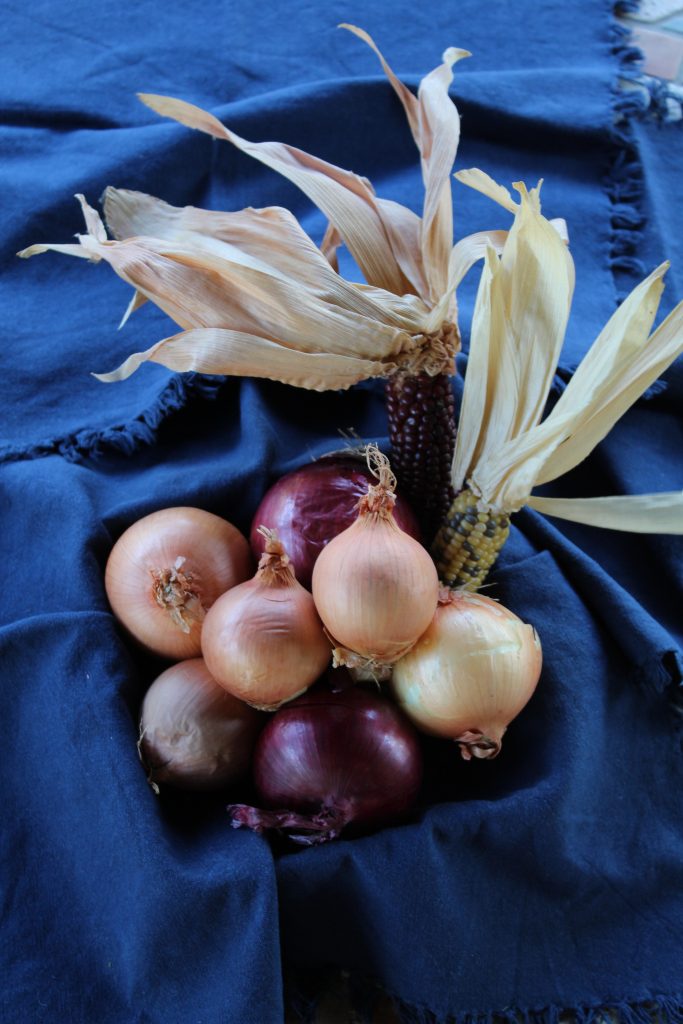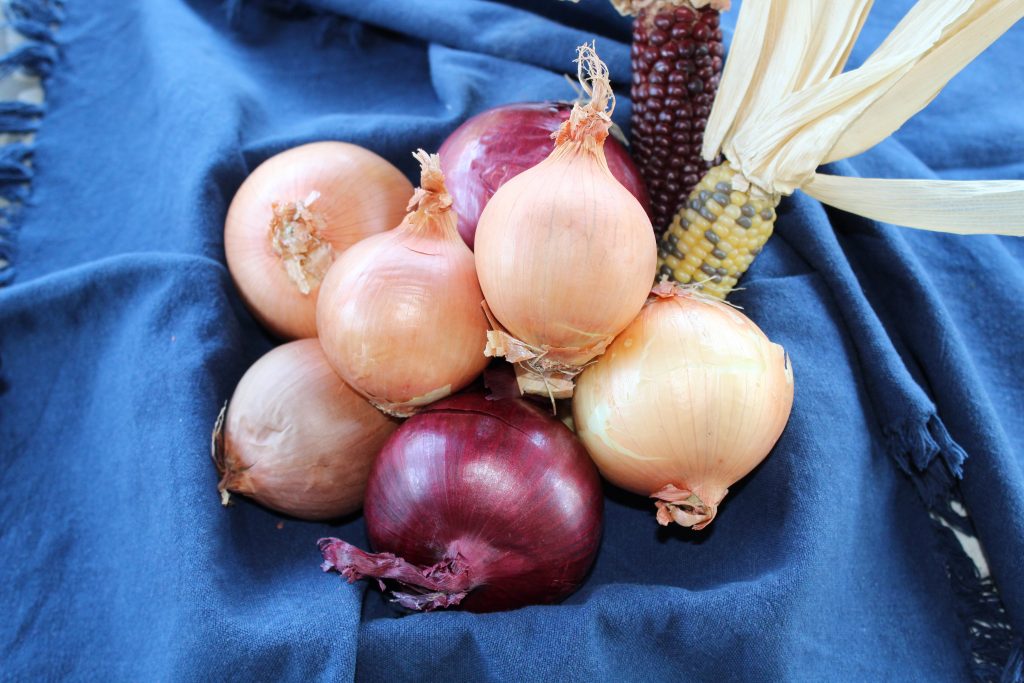Radici, tuberi e bulbi – Onions
Description:
the bulb is the edible part of the plant. It is made up by the enlargement of the basal part of the leaves that thicken, become fleshy, white or lightly colored red or violet. The outer sheaths are rather thin, paper, with a colour ranging from white to golden to red to violet, depending on the variety. The root system consists of numerous bunched and superficial roots (usually in the first 20-25 cm of soil), whitish in color, normally devoid of root hairs and fleshy. At germination has a small leaf that protrudes from the ground with a ring shape and subsequently rises and assumes the appearance of a whip. Other leaves appear then slowly.
Origin:
onion is a biennial herbaceous plant probably native to the highlands of Turkestan and Afghanistan (West Asia). Its cultivation is very old and goes back to the Egyptians in the fourth millennium B.C.; today it is grown all over the world. It is grown in all Italian regions.
Flavor:
intense or sweet depending on the variety.
Curiosity:
to avoid crying while cutting onions is necessary to use a sharp knife, rinsing well or putting it in the freezer 10-15 minutes before.
It's good because:
rich in potassium and low in sodium, the onion has natural diuretic properties. It is recommended to stimulate blood circulation and promote the control of cardiovascular disease. It is also an invigorating food that has antiseptic and disinfectant action.

